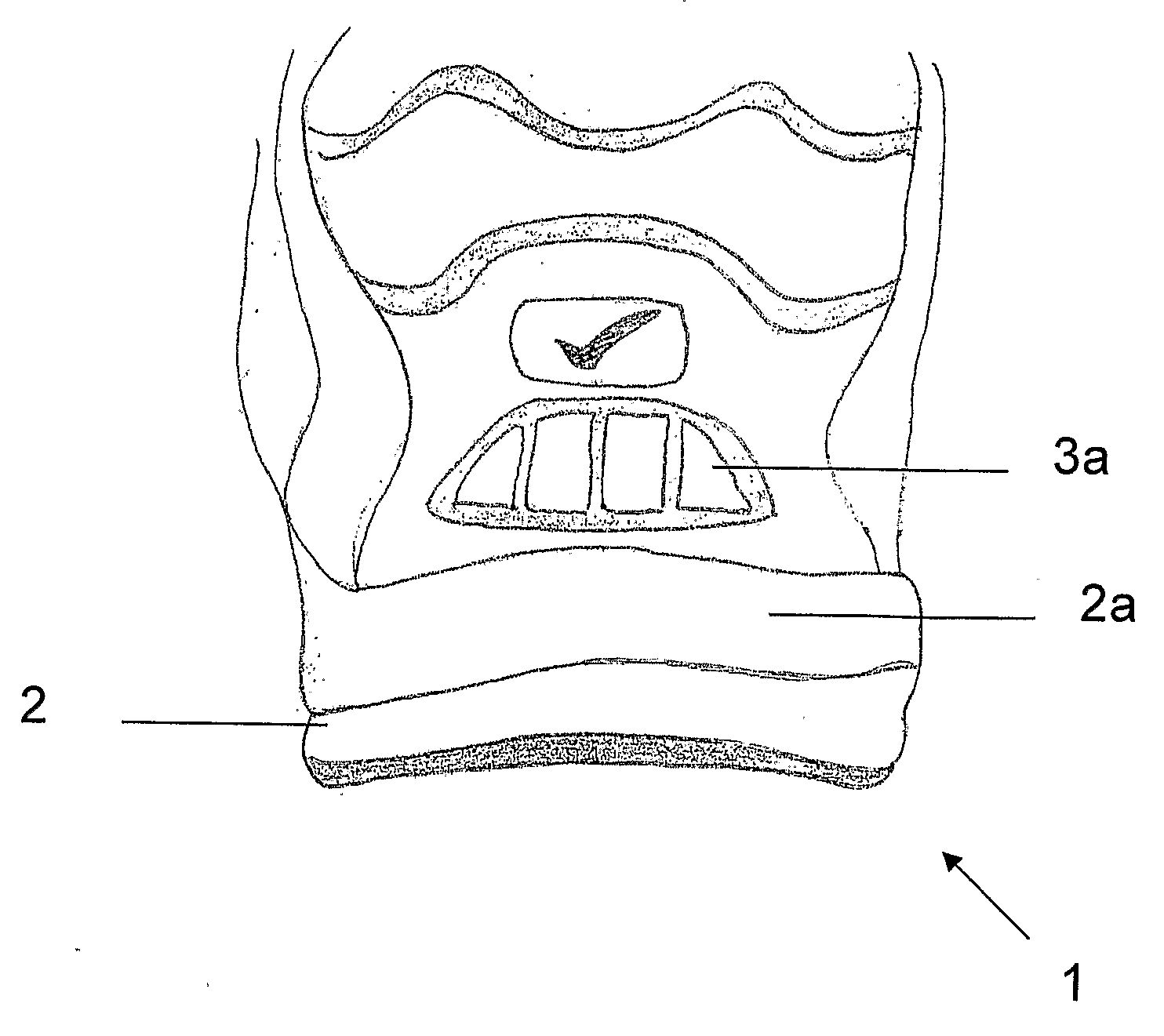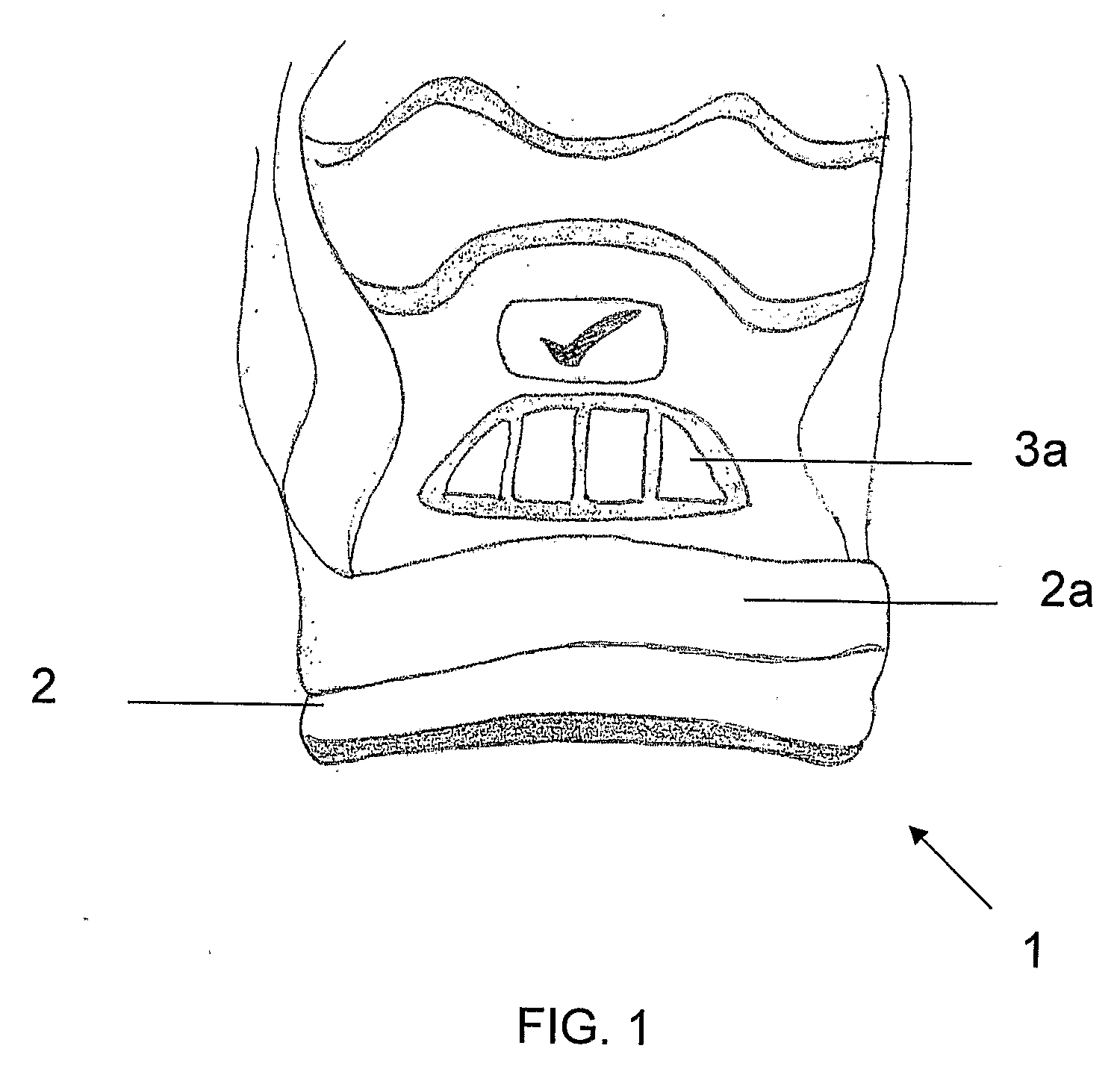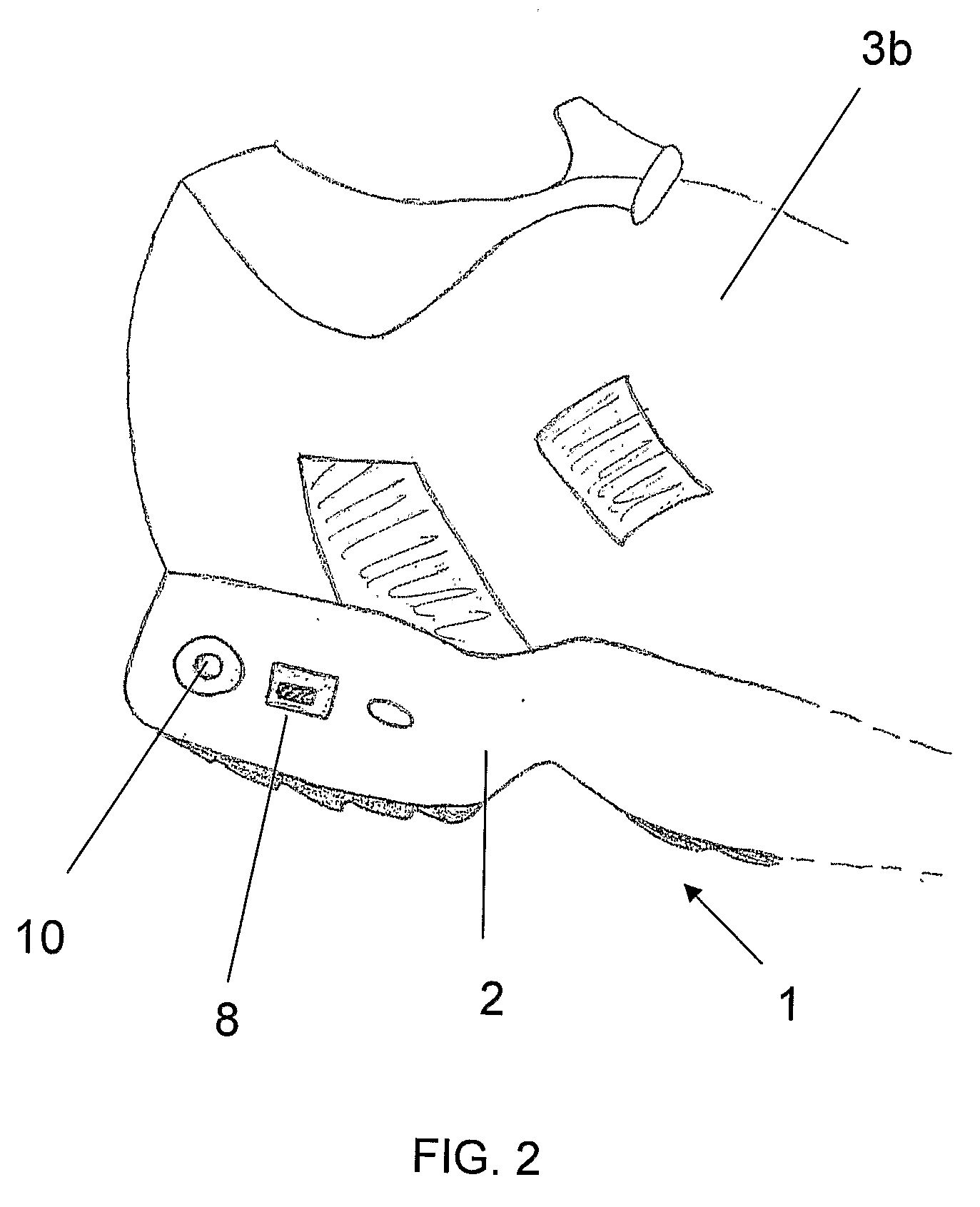Footwear
a technology for shoes and soles, applied in the field of shoes, can solve the problems of deterioration, wear and tear of the soles of shoes, and damage to the physical well-being of users, and achieve the effects of reducing the weight range of users, and prolonging the life of the sol
- Summary
- Abstract
- Description
- Claims
- Application Information
AI Technical Summary
Benefits of technology
Problems solved by technology
Method used
Image
Examples
first embodiment
[0111]FIGS. 1 to 6 depict various aspects of the present invention.
[0112]The first embodiment includes a shoe (1) having a sole (2) and first and second ECP displays (3a,3b) mounted on the shoe (1) which are operatively interfaced with the microprocessor unit (4).
[0113]The first display (3a) is mounted on a rear surface of the shoe (1) as shown in FIG. 1, and, the second display (3b) is mounted on an outward-facing surface of the shoe (1) as shown in FIG. 2.
[0114]The microprocessor (4) is housed within a hollow compartment of a heel (5) of the shoe (1) along with a power supply (6) for powering the microprocessor (4). The power supply (6) includes a compact 3-volt battery.
[0115]Both the first and second ECP displays (3a,3b) are adapted to adjust between first and second colour states. The microprocessor (4) is interfaced with the first and second displays (3a,3b) via a first pair of electrodes (11a,11b) and a second pair of electrodes (12a,12b) respectively. The microprocessor (4) i...
PUM
 Login to View More
Login to View More Abstract
Description
Claims
Application Information
 Login to View More
Login to View More - R&D
- Intellectual Property
- Life Sciences
- Materials
- Tech Scout
- Unparalleled Data Quality
- Higher Quality Content
- 60% Fewer Hallucinations
Browse by: Latest US Patents, China's latest patents, Technical Efficacy Thesaurus, Application Domain, Technology Topic, Popular Technical Reports.
© 2025 PatSnap. All rights reserved.Legal|Privacy policy|Modern Slavery Act Transparency Statement|Sitemap|About US| Contact US: help@patsnap.com



